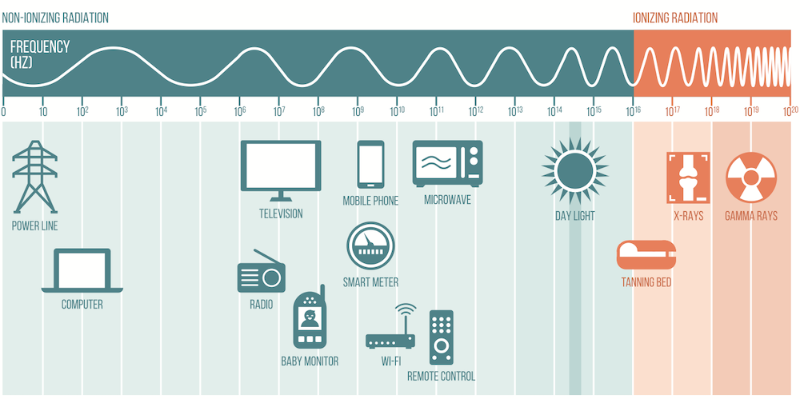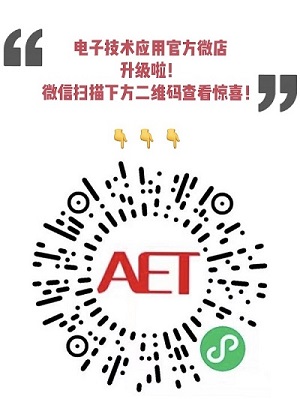Meet the Millimeter-Wave – The Sharpener of The Digital Age
2021-06-17
来源:是德科技
What do a stone ax and your latest mobile phone have in common?
They are both tools that made a notable impact in their relevant era. The ax transformed materials in the stone age, and the mobile phone is transforming information in the digital revolution. Just as a stone tool needs sharpening to be effective, your mobile phone needs bandwidth to deliver all the information you need in a fast and reliable way. Millimeter-wave frequencies offer the bandwidth and the speed your mobile tool needs, greatly improving communication efficiency, acting indeed as a sharpener – the sharpener of the digital age.

Figure 1: An overview of the key tools by technological era
THE NEED OF INFORMATION
There is no doubt that information technology has a great impact on the way we communicate, learn, and think. Access to information immediately, everywhere, and every time, plays an important role in everyday life. Especially now, in time of the pandemic, our reliance on this technology has increased even more.
According to the International Energy Agency (IEA), between February and April 2020, internet traffic surged by nearly 40%, mobile network traffic grew 50% (Ericsson Mobility Report), and there is no sign that this trend will slow down.
SHARPEN THE INFORMATION
Until recently, the frequencies used for communication purposes were limited to the microwave band, typically defined to cover the 3-30 GHz range. Most commercial wireless networks use the lower part of this band – between 800 MHz and 6 GHz, as known as sub-6 GHz band. That means that the 3G/4G/5G cellular connection on your smartphone, your home WiFi, the Bluetooth connection on your wireless headset, and almost anything you can think of, will use those frequencies to transmit information.

Figure 2: The electromagnetic spectrum
Spectral congestion represents the main critical challenge of today's wireless network.
While the number of users and devices consuming data increase exponentially, the radio spectrum frequency band available to the telecom carriers remains unchanged. This leads to slower speeds and frequent disconnections.
One way to solve this problem is to transmit signals on bands where the spectrum is readily available. The millimeter-wave (mmWave) band is particularly interesting, due to the huge amount of under-utilized bandwidth that lies in this part of the electromagnetic spectrum. Multi-gigabit mobile communication systems and high-throughput satellites can boost data transmission with extra bandwidth. Also, this technology is the backbone of future applications such as Extended Reality (XR)。
MULTI-GIGABIT CONNECTIVITY – FULFILL THE NEED OF CAPACITY AND SPEED
Satisfying the demand for high-quality services for the large and increasing number of subscribers accessing the mobile cellular network is essential for network operators.
The sub-6 GHz cellular bands used for today's latest communication systems, are extremely crowded and fragmented. To meet the expected and desired data throughput, high-frequency bands in the millimeter-wave range need to be adopted in a way to accommodate more users in a spectrum section still free of interferences and not yet allocated. The millimeter-wave bands offer an information bandwidth that allows data transfer rates up to 10 Gbit/s. This speed is comparable to optical fiber and a hundred times faster than the current 4G technology.
Many assume that air, used as a wireless transmission medium, does not have bandwidth limitation, but it does. If the number of connections increases and the network does not adapt to this new need, calls or messages to friends will be limited by the overwhelming number of users. Life will be like attending a football game at a big, crowded stadium with everyone on their phones at the same time.
New technologies like 5G or Wi-Fi (802.11ay) are designed to overcome those challenges and guarantee what is defined as “great service in a crowd”。
Millimeter wave characteristics are, for instance, very important to tackle this challenge. Atmospheric absorption increases, as you move to higher frequencies, reducing substantially the transmission range. Millimeter waves allow close-range communication up to 100 meters, rather than kilometers. In this scenario, the frequency can be reused allowing simultaneously operating networks that do not interfere with each other. Technologies such as beamforming also increase the cellular network capacity improving the transmission efficiency targeting the users.
SATELLITE COMMUNICATION – ENABLING MORE FLEXIBLE APPROACHES
Satellite communication plays a vital role in the global telecommunications system. About 3,000 operational satellites are currently in orbit around Earth and more than 1,800 of them are communication satellites. Over the past two years, multiple commercial satellite operators have begun launching high-throughput satellite (HTS) constellations. These next-generation satellites will provide far more throughput — up to 400 percent — compared to conventional fixed, broadcast, and mobile satellite services.
This significant increase in network capacity will be achieved by the use of 'spot beam' architecture to cover a desired cellular network service area, in contrast to the wide beam used in traditional satellite technology. This architecture leverages a higher transmit/receive gain that permits higher order modulation to achieve higher data rates. Targeting a service area with multiple spot beams allows operators to configure several beams to reuse the same frequency band and polarization, boosting network capacity where needed.
EXTENDED REALITY – THE DAWN OF A NEW AGE
Extended reality (XR) is an emerging umbrella term that encompasses all of the immersive technologies. The ones we already have today — augmented reality (AR), virtual reality (VR), mixed reality (MR), and the area interpolated among them. XR will have exciting applications in diverse fields such as entertainment, medicine, science, education, and manufacturing. It will change how we see and interact with the world around us, real or computer-generated.
While VR and AR applications are already present in the market, the adoption rate is slow due to the lack of information bandwidth and high latency.
Today's wireless networks place serious limitations on those applications, such as latency and capacity, which negate the user experience. 5G millimeter-wave technology, thanks to the increased transmission bandwidth and low latency, will strengthen existing experiences and enable novel ones, paving the way for mass adoption. However, to provide a truly immersive AR, at least a tenfold increase in data rate is needed.
Continued innovation and availability of radio spectrum will be pivotal to tackle those challenges. 6G will be the sixth generation of wide-area wireless technology, expanding the availability of frequency bands for communication into the high side of the mmWave band, also known as sub-terahertz (sub-THz)。 6G promises to increase the data rate from 5G's 20 gigabits per second (Gbps) to 1 terabit per second (Tbps)。 Also, 6G will reduce the latency to less than 1 millisecond. As a result, 6G's traffic capacity will increase from 5G's 10 Mbps/m to a theoretical maximum of 10 Gbps/m.
Holographic communication, tactile internet, and fully immersive virtual/augmented reality are among other applications that this future technology will make possible. Once again, the electromagnetic spectrum is a key enabler and may trigger the beginning of a new age, where creativity and imagination will hold a central spot in our existence.


